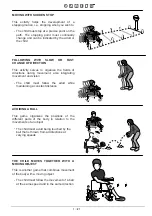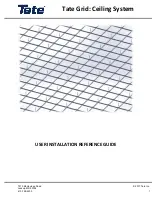
1
/
21
5. Follow this movement plan:
a) Allow a phase of getting comfortable with the aid. Most children, even very small ones, are not
afraid to use it and, in fact, tend to “try it out,” immediately learning to move in all directions. Our
experience is that children usually start by moving backwards. This is obviously the most natural
way and should not be opposed (fig. 5).
In this case, which is very common, it will be necessary to make sure
that there are no hazards (stairs, fireplaces, burners, etc.).
If you find that the child is “timid” (probably due to perceptual
problems that are influencing his awareness of space, depth and
distance), it is a good idea to proceed cautiously without forcing.
In any case, it is a good idea to allow the child to experiment with
the aid as freely as possible; later you can transition to a more
specific and targeted use.
During this phase, the child must never be left alone; an adult
SHOULD KEEP HIS HANDS IN CONTACT WITH THE AID AND PROGRESSIVELY REMOVE
THEM.
a) Some activities are performed stopped: grasping objects, turning the head to locate sounds and
simultaneously turning the head and trunk.
b) At this point, the adult will slowly and gently move the aid in all directions to give the child a
sense of the movement.
c) Having achieved a certain sense of security and ability to maintain the equilibrium of the trunk,
it's time to take the first steps, first with the aid of the adult and then without.
It is a good idea to delimit the spaces with visual indicators that facilitate orientation and spatial
and temporal organization.
(fig. 5)
Summary of Contents for Birillo
Page 2: ......










































